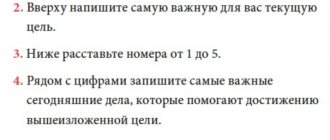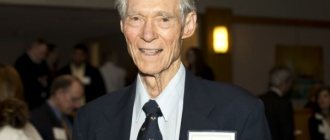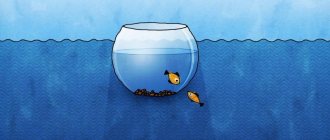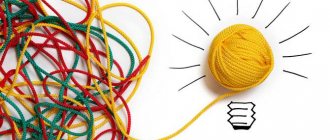Broken windows theory is the brainchild of sociologist George Kelling and political scientist James Quinn Wilson. Thanks to this theory, one of the largest metropolises in the world, New York, in just a few years, transformed from a crime-prone city, in which over 1,500 crimes and about a dozen murders were committed daily, into the most prosperous and safe city in the United States.
The successful application of this theory gave impetus to its use by other countries in the fight against crime. As the broken windows theory became popular, dramatic changes occurred not only in the criminal world. This concept has been successfully used in business.
The broken windows theory - what is it in simple words
This concept received such a “speaking name” because of the phenomenon of a directly proportional relationship between crime and order. If one day you observe one broken window in a house, after a short period of time all the windows in it will be broken. A single violation of integrity and order creates the impression of complete anarchy and impunity.
Simply put, the broken windows theory is a theory that states that the sight of any kind of disorder causes base impulses in people to behave uncivilly: throwing garbage where there is already litter, running a red light because others are doing it, breaking up something what’s broken, shit where it’s already been shit, etc. Such minor offenses cause a chain reaction of larger violations. Impunity for small things gives a signal for more serious crimes.
Returning to New York in the 70s and 80s of the last century, this city was a dangerous and dirty metropolis, where passers-by were robbed in broad daylight, and at night only a madman could go out onto the street. A dirty subway, walls and carriages painted with vulgar pictures and inscriptions; trash and broken bottles lying everywhere; drunks on the streets and beggars brazenly pestering passers-by; bandits who openly take money and valuables from passengers in transport; prostitutes and pimps in Times Square - that's what New York was then.
If you constantly live in an atmosphere of chaos and anarchy, this psychologically prepares a person for illegal actions. When Rudolph Giuliani became mayor of the city in the early 90s, the situation gradually began to change. He began to actively use the broken windows theory, which, in his opinion, was easy to apply and effective.
By persistently, step by step, fighting minor violations of order and the law, Giuliani and his appointed police chief, William Bratton, were able to transform New York into a comfortable and safe city.
Decoy effect
The most common use of this effect is in a pricing model - one price option is intentionally included to encourage you to choose the most expensive option.
In the famous TED talk “Are we in control of our own decisions?” Dan Ariely gives an example of an ad from The Economist outlining subscription package options for that magazine. Here's what they suggested:
- Internet subscription: $59
- Print subscription: $125
- Online and print subscriptions: $125
Crazy, isn't it? You can get just the print version of the magazine and the online+print package for the same price. Why are they offering this?
Dan Ariely also asked this question, but when he contacted The Economist, he, of course, did not receive a direct answer.
So he decided to conduct his own study involving one hundred students. He gave them the price packages described above and asked which one they would like to buy. When all three options were presented to the students, the students chose the combined subscription - this was the best deal, wasn't it? But when he eliminated the "pointless" option (a $125 print subscription), students preferred the cheapest option.
It turned out that the middle option wasn't so useless - it gave students a benchmark for judging how "good" the combined option was and convinced them to pay more for that option.
So, to achieve his goal, the seller can add a third option to the two main options, thereby increasing the chances of purchasing the product that he himself is primarily interested in selling...
Scientific evidence for the broken windows theory
For several years, despite positive changes in the criminal world in many countries where the broken windows theory was introduced, it was still perceived as a hypothesis. Not everyone believed that the troublemakers provoked “respectable” citizens to commit illegal actions. It has been argued that dirt on the streets and in public places is a consequence of high crime rates, not its cause.
Dutch social scientists decided to conduct several experiments to finally determine the role of the broken windows theory.
Experiment with bicycles
For the first experiment, we chose a bicycle parking lot, which was initially well maintained and had a poster on the wall asking people not to paint the walls. Advertising brochures for a fictitious sports store were attached to the bicycles and all bins were removed. When the owner approached his bicycle, he had three options for the development of events:
- Take the advertising brochure with you to throw it away where there is a trash bin.
- Throw the prospectus directly onto the asphalt.
- Place it on the next bike.
2/3 (52 out of 77) of cyclists did not violate public order by taking the avenue with them. The rest either threw it on the ground or re-taped it.
Then the experiment was repeated: again they pasted brochures on the bicycles, removed the trash cans and made only one change - they painted the wall near the parked bicycles with meaningless drawings. This disruption changed the behavior of cyclists and provoked their desire to get rid of avenues more radically: out of 77 subjects, 53 threw them directly onto the asphalt.
Trolley experiment
A sign was installed in the underground parking lot of a grocery supermarket asking people to return carts to the store. Advertising leaflets were placed under car windshield wipers. When there were no abandoned carts in the parking lot, only 1/3 of visitors threw flyers onto the ground. When they deliberately left 4 carts abandoned in the parking lot, 58% of shoppers left leaflets behind on the pavement.
Violation of order in one thing gives impetus to violations in another - this is the psychology of the majority. “If someone breaks the rules, why shouldn’t I break them too?”
Experiment with sound
Sociologists made an interesting conclusion when testing the broken windows theory with sound effects. In the Netherlands, it is legally prohibited to use pyrotechnics (fireworks, firecrackers) on New Year's Eve. Violators will face a hefty fine. The experiment showed that those residents who heard the sounds of firecrackers exploding (disruption of order) threw leaflets on the ground much more often than those who did not hear these sound effects.
Experiment with 5 euros
An envelope was placed in the mailbox, through which a five euro bill was clearly visible. In the first case, the mailbox was clean and tidy, as was the area around it. In the second case, the box was deliberately painted with meaningless pictures. In the third case, they littered around.
As a result, in the first case, 13% of passers-by pocketed the envelope with the banknote. In the second experiment, 27% of people took the envelope. In the case of scattered trash, 25% of people stole the envelope.
This led to the conclusion that in the absence of order, people create even more disorder.
Priming effect
Probably everyone has ever played a game in which one person says a word, and the other immediately responds with the first association that comes to mind? Games such as Alias are based on a similar principle. As a rule, the use of such stable associations in the game as: “Tula …” - gingerbread, “last …” - bell works flawlessly.
It's kind of like programming. You receive one signal and it affects how you respond to the next one. Psychology Today magazine cites a study of two groups of people reading the words “yellow” followed by either “sky” or “banana.” Because people have a semantic connection between a fruit and its color, the yellow-banana group recognizes the word banana faster than the yellow-sky group recognizes sky.
How does marketing apply this? For example, using this method to select the background of an Internet site can help site visitors remember key information about a brand—and perhaps even influence their purchasing behavior.
This has been tested previously. In a study conducted by Naomi Mandel and Eric Johnson, researchers changed the background and design of a website to see how it might affect consumers' product choices. Participants were asked to choose between two products of the same category (for example, between Toyota and Lexus). The researchers found:
“..visitors who were primed for money (the background of the website was green and depicted dollars) took longer to view pricing information than those who were primed for security (the background was red-orange with flames) . "Similarly, consumers who were primed for comfort when choosing a sofa took longer to view information about the comfort of the sofa (the website was designed in blue with light clouds) than those who were primed for money (a green background with dollars)."
How Broken Windows Theory Impacts Business
Someone will think: what does the broken windows theory have to do with business, since it concerns the criminal world? In fact, this theory can be seen in the business world as well.
You have entered a restaurant that positions itself as a popular and elite establishment with exquisite dishes, a famous chef and always fresh food. What would you think if you saw a waitress in wrinkled clothes, a badly washed plate, or a dirty restroom? This is unlikely to give you any confidence in the food served here. And, it is likely that doubts will arise about the sincere care for visitors on the part of the owner and staff. Although, it would seem, what does a wrinkled uniform have to do with Greek salad? But such a mess in the little things will cause certain logical conclusions and a decline in image in the eyes of clients. This cannot but have a detrimental effect on business.
- Dirt and disorder in the office, impolite employees, a poorly written menu, a dusty counter, peeling paint - these little things create a certain impression on potential clients and partners. And all these are broken windows.
- If you are greeted in a Japanese restaurant by a blond guy with wide blue eyes, this is a broken window.
- If you cannot return a purchased and unopened item to the store, it is a broken window.
The broken windows theory can also be observed in working with personnel. If a manager turns a blind eye to an employee’s tardiness or inappropriate appearance, after a short time the rest of the employees will begin to behave the same way:
- be late for work,
- during working hours, deal with personal issues or do nothing at all,
- take endless smoke breaks,
- come in unkempt clothes or with a rumpled appearance.
You can’t count on productive work in such a team. If your business has an online presence, it is important to keep track of all the reviews your company receives. By ignoring a negative review from a dissatisfied client, you expose your business to great risk: very quickly, similar ones will appear under one negative message. Unflattering reviews will overwhelm your company, creating a bad reputation for it, which will then be quite difficult to restore.
Loss aversion
Loss avoidance, or “loss aversion,” means that once you have something, you really don't want to lose it.
When Daniel Kahneman studied this concept, study participants were given mugs, chocolate, or nothing. Participants were then asked to make a choice: if they received an item, they could trade it, and if they did not receive anything, they could choose one of two options for the items.
What was the result? About half of the participants who started without any items chose mugs, but 86% of people who received mugs from the beginning were "stuck" with them, not wanting to sell them.
Morality? People don't like to lose what they have already received.
This effect is successfully used by marketers. For example, providing a free version of an IT product for a certain period of time. After the free use period has expired, the application may be deleted if the buyer does not pay for further use.
How to prevent broken windows
When “broken windows” appear in a business, significant efforts must be made to “repair” them. It is better to regularly monitor the process and, noticing emerging “cracks,” stop the possibility of broken windows.
- For a business in the service sector, polite, attentive attitude towards customers should come first.
- Check whether you are making promises that you cannot keep. Will customers get what they expect? Is it possible to give them more than they expect without making your business unprofitable?
- Encourage employees to be better than other companies. Ask questions about the motivation of your employees. Are they interested in surprising customers with their level of service? Do they strive to give customers more than they bargain for?
- Use the mystery shopping method to help you understand what challenges your customers face. Anonymously visit one of the retail outlets, leave a complaint or make a call from an indignant customer and observe how your employees react to them.
Always strive to stand out from your competitors. You must have all the best that your competitors have, and a little more, so that customers do not have the thought of leaving you for someone else.
Attempts at refutation
It is important to note that such practically oriented experiments are largely flawed when viewed from a scientific point of view. Most studies of the phenomenon under consideration have highlighted the analysis of correlations, and such data can be viewed from different perspectives. Correlation does not reveal the essence and content of cause-and-effect relationships between the phenomena being studied. Therefore, the presented theory was questioned by representatives of the scientific community. The issue that deserves special attention is the challenge of the fact that people’s violation of certain rules can provoke other people to commit similar acts.
To resolve all controversial issues, it was decided to conduct strictly designated and structured experiments. Representatives of one of the universities in the Netherlands conducted a series of experiments on the streets of the city; the results were presented in an article published in the journal Science.
Limited
Have you ever bought plane tickets or booked a hotel online and seen a warning message saying “only 3 seats left at this price”? Yes, that's what a deficit is (another concept Dr. Cialdini uses). This principle of psychology goes back to the simple formula of supply and demand: the rarer the opportunity, content or product, the more valuable it is.
In 1975, Stephen Worchel, Jerry Lee, and Akanbi Adewole conducted a study to see how scarcity affects our perceptions. They asked people to rate chocolate chip cookies. One jar contained ten pieces of cookies, and the other only two.
“The rating of cookies from a jar that only had two of them was twice as high as the rating of cookies from another jar. The effect persisted even if the cookies in the jars were the same.”
So when advertising is full of the words “exclusive”, “limited edition” or “latest offer”, ask yourself what attracts you more - the product itself or your unique status as an exclusive owner.
Reciprocity
In Dr. Robert Cialdini's book Influence: The Psychology of Persuasion, the concept of "reciprocity" is presented in a very simple formula - if someone does something for you, you will naturally want to do something for you. the answer for him.
If you've ever received chewing gum along with your bill at a cafe or restaurant, you've been a victim of reciprocity. According to Cialdini, when waiters bring a customer a check without chewing gum, this will certainly affect the tip amount as a reflection of the perception of the quality of service. With one piece of gum, tips increase by 3.3%. Two mints? Tips can increase up to 20%!
There are many ways to take advantage of reciprocity in marketing. At the same time, the seller should not go broke by giving you valuables for free. A bonus can be anything - from a branded T-shirt to an exclusive book, free desktop wallpaper, or a collection of tips on some issue. Even something as simple as a handwritten card or note can be the key to establishing reciprocity. It is enough for the seller to give you a free and, most likely, unnecessary thing before asking for something more tangible in return.
Social influence
Most are already familiar with this concept, but it is too important to be ignored. If you're not familiar with it, the concept of informational social influence (or social proof) is where people tend to accept the beliefs or actions of the group of people they like or trust the most. In other words, it's a "me too" effect. Or the “dance floor” effect - few people want to be the first on the dance floor when the dancing first starts, but as soon as the first few people start dancing, the rest immediately join in.
The simplest way to use social influence is to use social media buttons under posts on blogs and websites. The number of reposts speaks for itself, forcing a new reader to do the same, and the presence of friends in the readers of a page or blog creates an irresistible desire to “join”.
Clustering (grouping)
Humans have a limited amount of short-term memory. Most of us can only remember seven pieces of information at a time (plus or minus two pieces in a given situation).
To deal with this problem, most people tend to group similar pieces of information together. For example, if you had a shopping list of random items, you tend to mentally group the items into certain categories (dairy, meat, etc.) so that you can better remember what was on the list.
This is why marketers pay so much attention to content clustering. Grouping similar topics together—under numbered lists or with different heading sizes—helps us remember information better.
Anchor effect
Why is it so hard to resist sales at your favorite clothing store?
This is often due to the anchoring effect—people make decisions based on the first piece of information they receive. So if your favorite store usually sells jeans for $50, but on sale sells them for $35, customers will be delighted. It's easy to feel like, "I'm getting a crazy deal on these jeans!" which is more likely to lead to a purchase. But, for example, if a person usually buys jeans for $20, then this discount will not make such an impression on him.
The anchoring effect is the most important move for marketers: they must set the anchor clearly - indicate the initial sale price, and then indicate the actual sale price next to it and indicate the percentage of savings (preferably in a bright and catchy way).
Verbal effect
According to a study conducted by a team of scientists at the University of Ontario, people are more likely to remember the gist of what someone said rather than specific details. So, when you attend a training session on how to blog better for your business, you're more likely to remember details like "Send your article to someone to edit before publishing" rather than "Send to a Google Doc three working days before publication to colleagues so that they can make edits to your work. Remember to make corrections in “edit mode” so you know what you missed!”
Scientists call this the “verbatim effect,” and it can have a huge impact on how content is perceived. People are known to spend a small amount of time reading online, and on some sites they don't spend more than 15 seconds.
This is why marketers focus on short and catchy headlines. If the title clearly reflects the content of the article, then you will remember the essence of the article much faster, and later you will easily remember its title so that you can find it again on Google.











